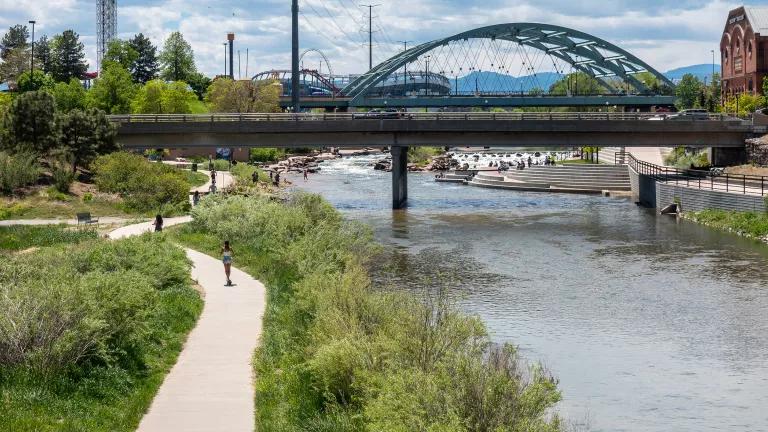SPARCC Looks at Investment without Displacement
As the country grows more urban, many communities are facing the impact of major investment—ranging from businesses and residences to transit and parks. Officials must acknowledge and address the displacement crisis and advance ambitious solutions that address the root cause of the challenge.

Commons Park in Denver, Colorado
Jonathan Hawkins for RTD
As the country grows more urban, many communities are facing the impact of major investment—ranging from businesses and residences to transit and parks. One result is that as a nation we have a housing challenge that is leading to the displacement of people and long-time small businesses, and the destruction of the cultural legacy of communities.
Officials must acknowledge and address the displacement crisis and advance ambitious solutions that address the root cause of the challenge.
The Strong, Prosperous, And Resilient Communities Challenge (SPARCC) this week is hosting a convening over 300 leaders from 12 regions representing 22.5 million Americans to discuss and elevate emerging ideas of how we advance "Investment Without Displacement."
National thought leaders, advocates, public and private sector officials will be organizing to not only talk about challenges but spotlight integrated solutions that address issues of inequality, improve the social determinants of health, and advance environmental benefits that reduce the impact of climate change.
Over the last year, SPARCC has been working with regional groups to support affordable housing near transit and to make the case for Parks and Affordable Housing Joint Development and tenant protection laws that keep renters in their homes through collective action. (See the SPARCC Tenants Rights Issue Brief.)
SPARCC seeks to leverage these investments to change the systems that shape the built environment. We can create the conditions for change by organizing, mobilizing action and implementing and institutionalizing systems change solutions. A Systems Change Guide has been developed that explores the concept, spotlights regional efforts and includes an appendix of tools and resources to assess and prioritize systems change.
Communities should also advance equitable Transit-Oriented Development (eTOD) that prioritizes the preservation and creation of housing, schools, jobs, and health services around rapid bus and rail transit, and redesigns communities to support more walking, compact development and a greater mix of uses. Officials should must commit to addressing the level of services, affordability, social inequity, and advancing the sustainability of aging infrastructure.
Additional tools for communities to build resilience and equity can be found in a recent Issue Brief on green neighborhoods advancing strategies that create strong, just, and resilient communities.
As a nation we can build more inclusive, heathy places that bridge the economic divide by investing in equitable infrastructure that accelerates equity and resiliency.Tune into the plenary webcast of SPARCC’s “Investment without Displacement” event Dec 4 at 12 p.m. EST. View Live at https://bitl.y/2R6iZbL and follow the conversation on Twitter using the hashtag #WeAllThrive.



